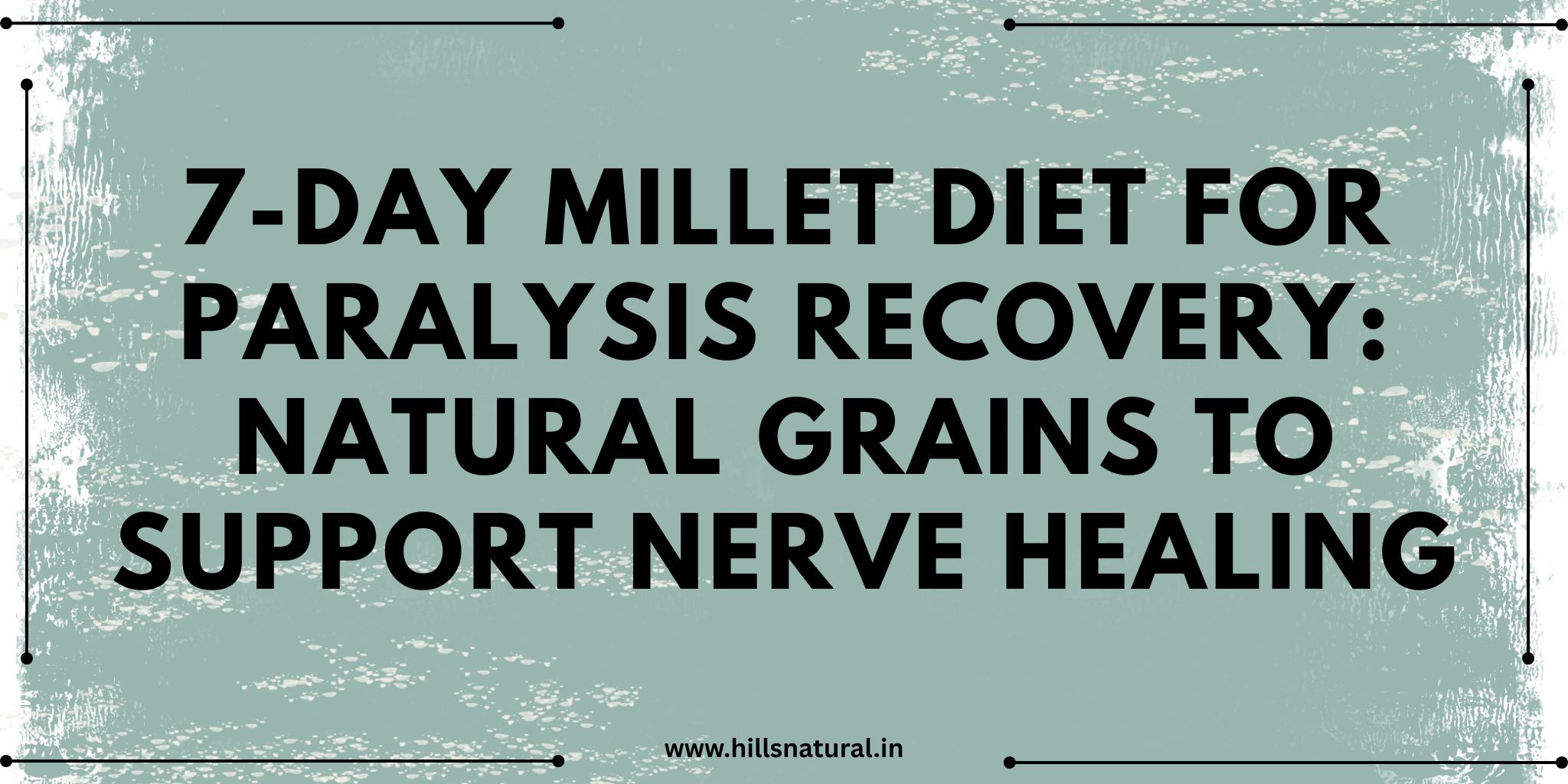
In recent years, millets have taken center stage in health-conscious diets—and for good reason. These tiny ancient grains are packed with nutrients and have shown potential in managing chronic health conditions, including neurological disorders like paralysis. Paralysis, often resulting from a stroke, nerve injury, or neurological disorder, affects motor function and quality of life. While medical intervention is primary, dietary changes can play a supportive role in recovery and long-term management. One such dietary approach gaining attention is the millet diet for paralysis recovery a simple, natural, and nourishing way to support nerve health and healing
Why Choose a Millet Diet for Paralysis Recovery?
Millets are gluten-free, rich in fiber, antioxidants, vitamins, and essential minerals like magnesium, potassium, and iron. These nutrients play crucial roles in:
- Nerve function and repair
- Blood circulation
- Reducing inflammation
- Regulating blood sugar levels
- Supporting brain health
Let’s explore a 7-day millet rotation plan designed to support the body naturally in cases of paralysis and neurological weakness:
7-Day Millet diet for paralysis recovery: A Grain-by-Grain Plan
Known for its high magnesium and iron content, brown top millet can aid in improving nerve conductivity and oxygen supply to brain tissues. It also helps detoxify the body, which can improve healing post-injury.
How to consume: Brown top millet khichdi, upma, or porridge.
This millet is rich in lecithin and B-vitamins, which are vital for brain function and neural regeneration. It also regulates blood sugar—important for those with diabetes-related paralysis.
How to consume: Foxtail millet dosa, pulao, or pongal.
Kodo millet is a natural antioxidant booster. It helps reduce oxidative stress, which can worsen nerve damage. It’s also known to calm the nervous system and aid in muscle relaxation.
How to consume: Kodo millet salad, idli, or kheer.
Rich in potassium and iron, little millet supports better circulation, ensuring that oxygen and nutrients reach affected muscles and nerves.
How to consume: Little millet upma, poha, or soup.
With a low glycemic index and high fiber content, barnyard millet helps in blood detoxification and reduces inflammation. It supports the body’s natural healing process, especially in neurodegenerative issues.
How to consume: Barnyard millet pongal, thalipeeth, or porridge.
A Few Tips for Best Results
- Hydrate well: Millets are high in fiber. Drink plenty of water to aid digestion.
- Use traditional recipes: Cooking millets with ghee, spices like turmeric, cumin, and ginger adds additional anti-inflammatory benefits.
- Go organic when possible: Minimizes exposure to toxins.
- Be consistent: Results are gradual. A millet routine needs 3-6 months to show real impact when combined with therapy and medication.
Final Thoughts
While millets alone won’t cure paralysis, they can nourish the nervous system, support healing, and enhance recovery when paired with physiotherapy, medication, and medical guidance. Many traditional diets, especially in India, have long recognized the value of rotating millets for overall vitality—and now modern science is catching up. Adopting a Millet diet for paralysis recovery may not just be a food choice-it can be a step toward a more holistic, healing lifestyle.
Let food be thy medicine, and let millets play their part in your healing journey.

